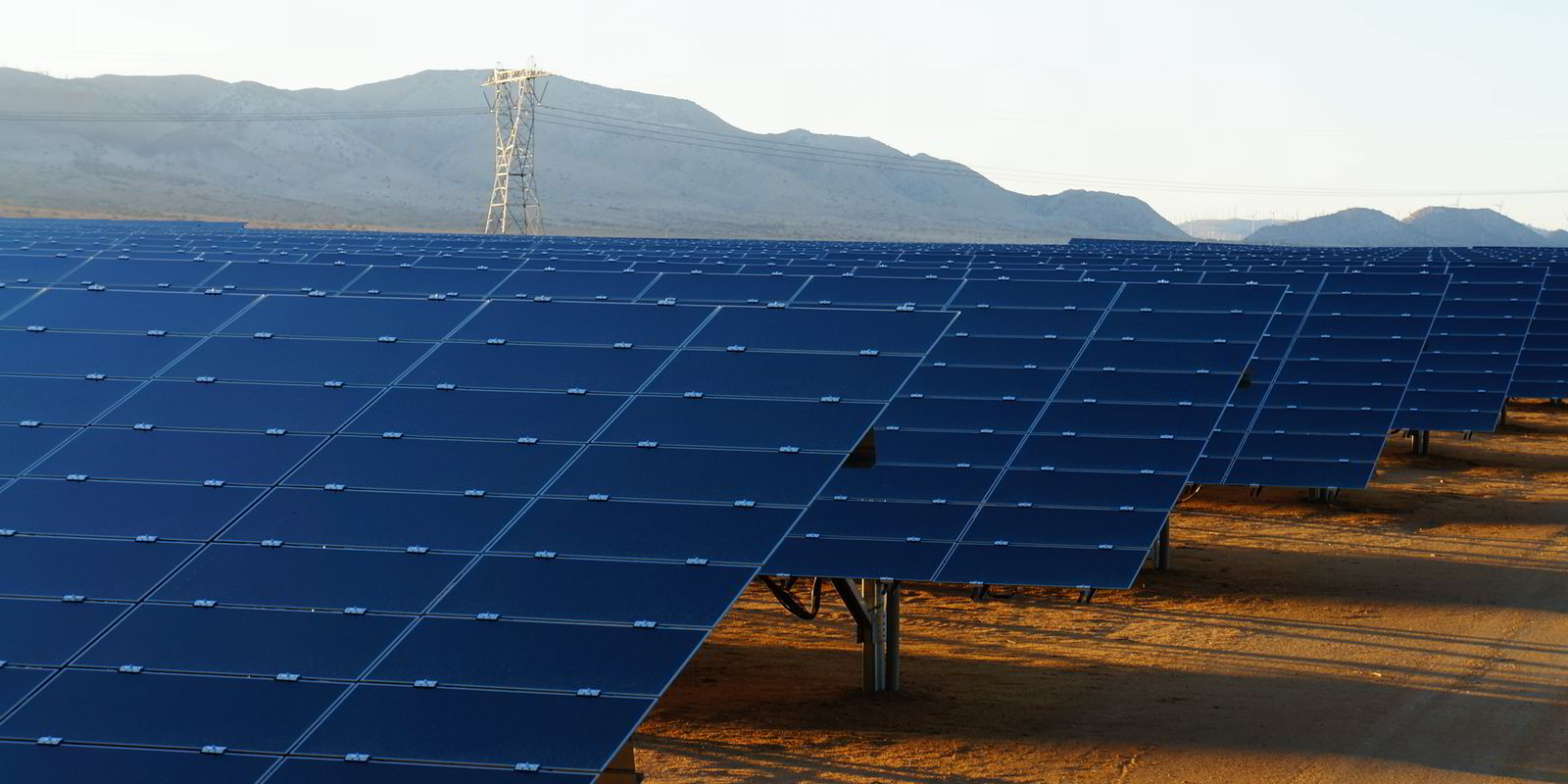EDF Renewable Energy (EDF-RE), the US subsidiary of France’s EDF Energies Nouvelles, is no newcomer to solar. It has built some of the largest solar projects in the US, including the 143MW Catalina project in California.
However, its major focus for project development over the years has been wind. EDF-RE is a top-10 owner of US wind capacity, and its O&M unit – EDF Renewable Services – is the country’s largest provider of third-party wind O&M services.
On a global basis, EDF Energies Nouvelles owned more than eight times as much wind capacity as solar, as of mid-2015.
In the US, however, the company’s focus is shifting.
“Right now we’re about 80% wind and 20% solar,” Grimbert said in an interview in EDF-RE’s San Diego headquarters. “But we see ourselves rebalancing that towards 50/50.”
“It’s much more difficult to differentiate yourself from the competition in solar,” Grimbert notes. “Solar development is easier – there’s less of a science in the site selection and site development.”
But the future solar market has many attractions, not least its size, Grimbert says.
EDF-RE believes that over the next 15 years the US will install an average of 10-15GW of solar each year, compared to 7-8GW of wind.
Solar will also reduce its levelised cost of energy at a faster rate than wind. “It’s a younger technology,” Grimbert says.
And then there’s the fact that the recent reprieves of the solar investment tax credit (ITC) and wind production tax credit (PTC) saw the ITC extended through 2021, while the PTC was only extended through 2019 – leaving a gap for wind before the Clean Power Plan kicks in, should it even withstand legal scrutiny.
Even after the extensions expire again, the ITC will still remain at 10%, while the PTC will drop to nothing.
Grimbert is “still adjusting” to the differences between the PTC and ITC extensions. “I don’t exactly understand why there’s a different timeframe,” he says. “It would make sense to have one big approach for the market-support mechanism.”
EDF-RE plans to build about 800-900MW of renewables capacity each year in the US for the foreseeable future, although some years the figure will be higher and some years lower.
Last year the developer completed nearly 1.4GW of capacity, as it took projects like the 175MW Pilot Hill wind farm online, and this year the figure will likely be around 700-800MW, he says.
In the solar projects it has built, EDF-RE has used modules from a variety of suppliers and based on a variety of PV technologies, including crystalline silicon panels from Canadian Solar and Trina, and thin-film panels from First Solar and Solar Frontier.
Consolidation in wind OEM sector ‘welcome’
The recent frenzy of mergers and acquisitions among wind turbine OEMs has been good for the industry, but the consolidation process still has a long ways to go, Grimbert says.
“It would be logical if eventually there were four or five players worldwide, not 10 to 15. We’ve seen that movement started, and I think it will continue,” he says. “I welcome the concentration in the OEM sector.”
The wind industry has been rapt this week amid reports that Siemens and Gamesa are in the final stretch of hammering together a deal to merge their wind businesses and create a new global giant.
The merger would follow GE’s recent acquisition of Alstom’s wind unit and Nordex’s acquisition of Acciona – an M&A wave whose magnitude has not been seen in the wind OEM sector for many years, if ever.
Concentrating the wind industry’s overall R&D spend within a handful of best-in-class turbine manufacturers will lead to a faster decline in the levelised cost of wind power, helping it compete against other generation technologies, Grimbert says.
EDF-RE is a major customer of several turbine OEMs in North America.
Last month the developer commissioned three wind farms in the US totaling 450MW, all supplied by Vestas. Last year it completed the 175MW Pilot Hill project in Illinois and the second phase of its 350MW Riviere-du-Moulin project in Quebec – now Canada’s largest operating wind farm – using GE, Vestas and Senvion turbines.
“Our procurement process is based on quality first, and then we negotiate,” Grimbert says. “There’s only a handful of players today that would qualify as having the level of quality we want.”
Grimbert is not fearful that a more-concentrated wind OEM sector would result in higher turbine prices for developers. “As long as there are three to five [suppliers] you’ll still have competition,” he says.
“I don’t see a monopolistic situation coming any time soon.”
